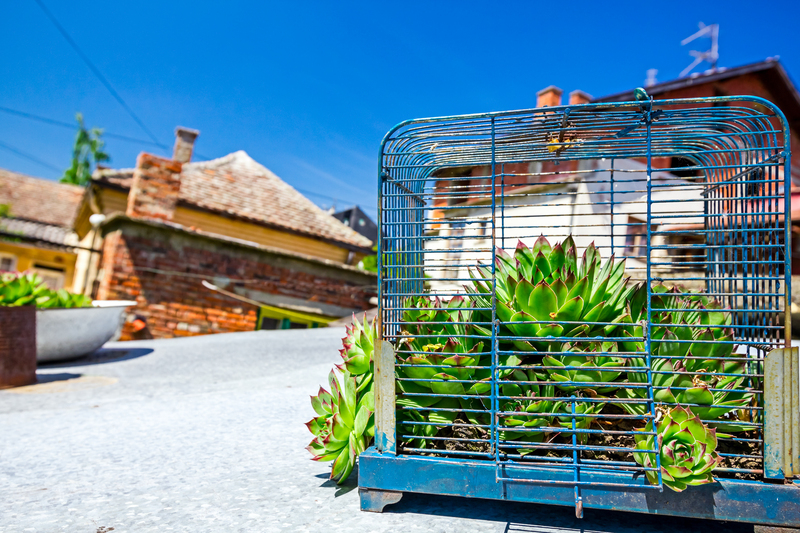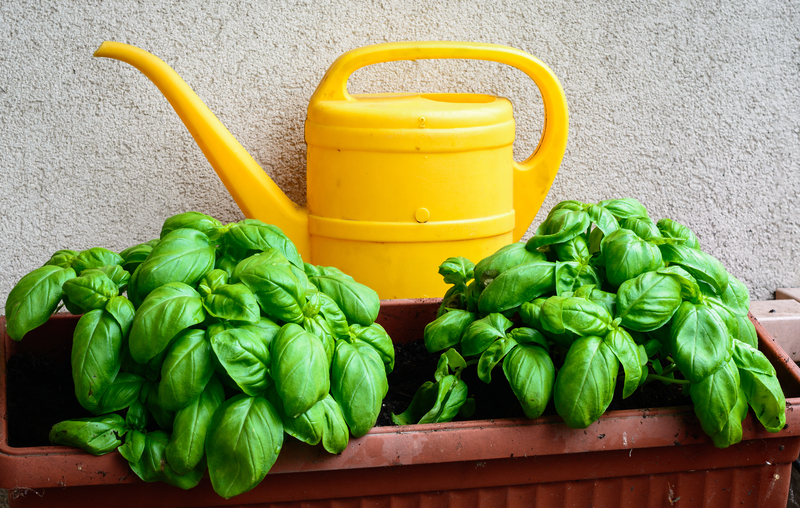Pollinator-Friendly Plants for Window Boxes That Attract Bees and Butterflies
Are you searching for ways to attract more bees and butterflies to your home, even if you don't have a garden? It's easier than you think! By curating pollinator-friendly window boxes, you'll provide essential habitats and food sources for these delightful and crucial creatures. Discover how you can transform your living space into a vibrant pollinator haven with our comprehensive guide to pollinator-friendly plants for window boxes that attract bees and butterflies.
Why Plant Pollinator-Friendly Window Boxes?
Pollinators like bees and butterflies play a vital role in our ecosystem. They pollinate more than 75% of our flowering plants, including many crops that humans rely on for food. However, pollinators are facing significant challenges due to habitat loss, pesticide exposure, and the spread of diseases. Creating pollinator-friendly window boxes is a powerful step you can take--even in an urban setting--to help these essential creatures thrive.
- Support Local Biodiversity: Window boxes provide much-needed foraging sites for pollinators in cities and towns.
- Enhance Your Home: Vibrant blooms not only attract wildlife but also beautify your living space.
- Enjoy Year-Round Beauty: With the right plant selection, you can have continuous blossoms from spring through fall.
- Easy Maintenance: Many pollinator plants are low-maintenance and thrive in containers.

Best Practices for Creating Pollinator-Friendly Window Boxes
1. Choose Locally Native Plants
Native plants are the best choice for attracting local pollinators such as bees and butterflies. They offer the right nectar, pollen, and habitat that has coevolved with local insect species. Research your local area to identify native flowering plants suited to window boxes.
2. Provide a Season-Long Food Source
Include a succession of blooms in your mix. By selecting plants with different blooming times, you'll ensure that bees and butterflies always have access to nectar and pollen throughout the growing season.
3. Avoid Pesticides
Pesticides--especially neonicotinoids--are harmful to pollinators. Choose organic, bee-safe methods for pest control and make sure any plants you purchase are not pre-treated with harmful chemicals.
4. Mix Shapes, Colors, and Heights
Window boxes work best when filled with a variety of flower shapes and colors. Bees are drawn to purple, violet, blue, and white flowers, while butterflies prefer bright colors such as red, orange, yellow, and pink. Mixing flower heights creates depth and visual interest.
Top 15 Pollinator-Friendly Plants for Window Boxes
Below are some of the best pollinator-attracting plants ideal for compact window boxes. These options, spanning annuals and perennials, will turn your window into a lively pollinator pitstop.
1. Lavender (Lavandula)
Famed for its fragrance and spikes of purple-blue flowers, lavender is a top pick for bees and butterflies. It thrives in a sunny window box with well-draining soil and is drought-tolerant once established.
2. Salvia (Salvia spp.)
Salvia's nectar-rich tubular flowers are a butterfly favorite, particularly for swallowtails. Choose compact varieties like 'Victoria Blue' for window boxes.
3. Alyssum (Lobularia maritima)
The dainty white, pink, or purple blossoms of sweet alyssum provide early-season pollen and nectar while spilling gently over window box edges.
4. Marigold (Tagetes)
Bright, cheerful marigolds offer a long-lasting nectar source. Both bees and butterflies are attracted to their bold orange and yellow blooms.
5. Nasturtium (Tropaeolum majus)
Nasturtiums bring vibrant red, orange, or yellow flowers and round leaves. Their blooms lure bees, butterflies, and even hummingbirds.
6. Zinnia (Zinnia elegans)
Zinnias are hard to beat for reliable, continuous blooms and their popularity with butterflies. For window boxes, choose shorter varieties like 'Profusion' or 'Thumbelina'.
7. Fuchsia (Fuchsia x hybrida)
With their exotic, pendulous flowers, fuchsias are a hit with both bees and butterflies. They thrive in partial shade, making them perfect for less sunny windows.
8. Coneflower (Echinacea purpurea)
While typically perennial, dwarf cultivar coneflowers grow well in larger window boxes. Their bright purple-pink flowers act as butterfly and bee magnets.
9. Verbena (Verbena spp.)
The clustered purple or pink flowers of verbena offer high nectar yields, particularly loved by butterflies.
10. Petunia (Petunia hybrida)
Petunias are available in a rainbow of colors and their trumpet-shaped flowers appeal to both bees and butterflies.
11. Calibrachoa ('Million Bells')
Resembling miniature petunias, calibrachoa produces prolific blooms and provides a reliable nectar and pollen supply.
12. Sedum (Sedum spp.)
Low-growing stonecrops, such as Sedum 'Dragon's Blood,' draw pollinators in late summer and have attractive succulent foliage.
13. Geranium (Pelargonium)
While not a primary source, classic bedding geraniums do appeal to butterflies and can be mixed into pollinator window boxes.
14. Coreopsis (Coreopsis verticillata)
The cheerful yellow daisies of coreopsis attract a wide array of bee and butterfly species and bloom for months.
15. Dianthus (Dianthus spp.)
Dianthus offers sweetly scented blossoms in pink, white, or red, providing a valuable food source for pollinators.
Design Tips for Pollinator Window Boxes
- Group Plants: Cluster the same species together to help pollinators more easily locate and access nectar and pollen.
- Height Layers: Place taller plants at the back (against the window) and let trailing plants spill over the front for both aesthetics and better pollinator access.
- Diverse Species: The more diversity, the more pollinators you'll attract. Avoid monocultures.
- Sun Exposure: Most pollinator plants prefer full sun. Choose window boxes that receive at least 6 hours of sunlight a day.
- Water Needs: Use well-draining potting mix and water regularly, but avoid waterlogged soil which can harm both plants and visiting bees.
- Color Coordination: Mix colors that are most attractive to target pollinators (purple, blue, and yellow for bees; pink, red, and orange for butterflies).
More Ways to Make Window Boxes Pollinator-Friendly
Add a Small Water Source
A shallow dish with pebbles and water tucked into your window box allows butterflies and bees to safely sip and rehydrate.
Provide Shelter
Arrange a few small stones, twigs, or a mini bee hotel in a corner of your window box to offer shelter for resting pollinators.
Avoid Excessive Deadheading
While removing spent blooms encourages new flowers, allowing some to go to seed supports seed-eating birds and late-foraging pollinators.
Use Organic or Natural Fertilizers
Chemical fertilizers and pesticides are best avoided; opt for compost or organic slow-release feeds.

Frequently Asked Questions About Pollinator Window Boxes
Can I attract bees or butterflies if I only have a small window box?
Absolutely! Even one compact window box planted with nectar-rich flowers can make a difference in the urban pollinator corridor.
Will bees in my window box be a nuisance?
Most bees are not aggressive and will ignore humans while foraging. Solitary bees (which make up the majority) neither sting nor swarm. Butterflies are entirely harmless.
What about night-time pollinators?
Some plants like night phlox or jasmine attract moths, which are important nighttime pollinators. You can try mixing a few night-blooming flowers for extra biodiversity.
How do I maintain window boxes for pollinator health?
- Water regularly, especially in hot weather.
- Remove faded flowers judiciously, leaving some for seed.
- Replace spent annuals seasonally for constant bloom.
- Clean leaves and containers with water only--avoid chemicals.
Conclusion: Turn Your Window Box into a Pollinator Sanctuary
Creating a pollinator-friendly window box is a satisfying, beautiful, and environmentally impactful gardening project. By choosing the right mix of plants that attract bees and butterflies, your window can become a frequent stop for local pollinators, helping with their conservation while adding color and life to your daily view.
Whether you opt for native perennials like lavender and coneflower, annual stars like zinnia and nasturtium, or colorful trailers such as calibrachoa and alyssum, your thoughtful choices will reward you with endless pollinator activity. Start small, observe which blooms are most visited, and adjust each season for maximum impact!
Let your window box be a beacon for bees and butterflies - and a celebration of nature in even the smallest urban spaces.
- Plan with native, nectar-packed flowers
- Recycle water and use organic soil
- Enjoy the beautiful buzz and flutter of pollinators right outside your window
Now is the time to plant your vibrant pollinator-friendly window box and contribute to a healthier environment for bees, butterflies, and your community!
```